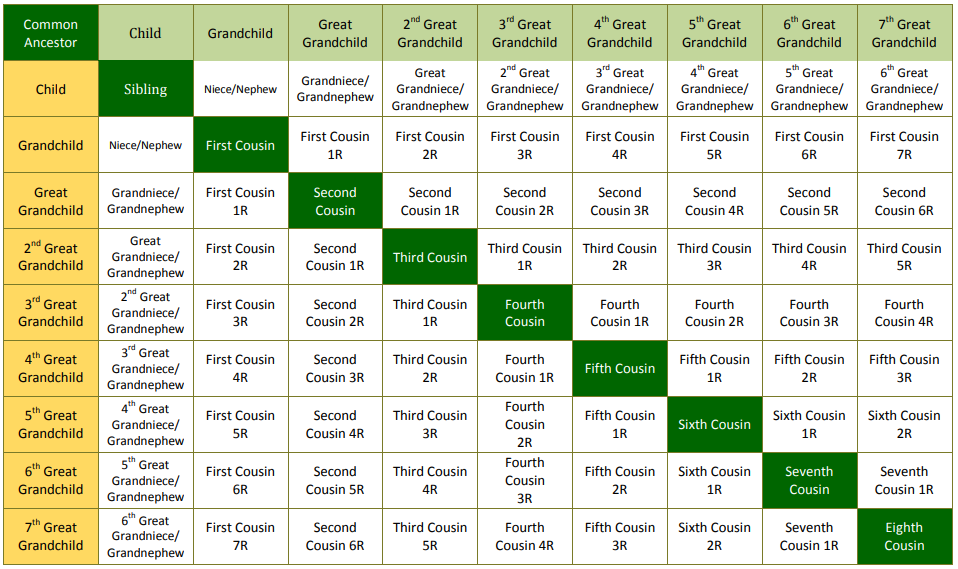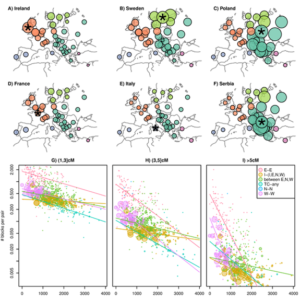
Relationship Charts and Degrees of Separation
As an amateur genealogist, I’m still learning about definitions, numbering systems, degrees of separation, resource citation, and research strategies. We’ve all heard of the “Kevin Bacon’s Six Degrees of Separation” theory that suggests any two people on Earth are six or fewer acquaintance links apart. In genealogy, a Cousin, of course is someone with whom you share a common ancestor at least two generations away from you (grandparent or above). Once you go beyond the first cousin relationship, it can become confusing. Basically, to determine the degree of the cousin relationship, find the closest ancestor you share in common, then count the number of generations between you and your cousin and that common ancestor. The graphic on the right explains how it plays out in genealogy and illustrates the concept nicely.
So, are we all related? The short answer is yes, but you’d have to go way back…thousands of years to establish that relationship. If we go as far back as 100 generations or approximately 3,000 years, genetics has proven that everyone can find a common ancestor of some kind as explained in the statistical theory of Joseph Chang (a statistician from Yale University) in his published theory from 1999, later proven through Peter Ralph’s (an assistant professor of computational biology from USC Dornsife) and Graham Coop’s (Geneticist at University of California, Davis) computational models from 2013.
Joseph T. Chang's Theory
Joseph T. Chang’s Theory: Recent Common Ancestors of All Present-Day Individuals
Abstract: Previous study of the time to a common ancestor of all present-day individuals has focused on models in which each individual has just one parent in the previous generation. For example, “mitochondrial Eve” is the most recent common ancestor (MRCA) when ancestry is defined only through maternal lines. In the standard Wright-Fisher model with population size n, the expected number of generations to the MRCA is about 2n, and the standard deviation of this time is also of order n. Here we study a two-parent analog of the Wright-Fisher model that defines ancestry using both parents. In this model, if the population size n is large, the number of generations, Tn, back to a MRCA has a distribution that is concentrated around lg n (where lg denotes base-2 logarithm), in the sense that the ratio Tn/(lg n) converges in probability to 1 as n → ∞. Also, continuing to trace back further into the past, at about 1.77 lg n generations before the present, all partial ancestry of the current population ends, in the following sense: with high probability for large n, in each generation at least 1.77 lg n generations before the present, all individuals who have any descendants among the present-day individuals are actually ancestors of all present-day individuals.
Reference: Recent Common Ancestors of All Present-Day Individuals
Peter Ralph and Graham Coop's Research
Peter Ralph and Graham Coop: The Geography of Recent Genetic Ancestry Across Europe
Abstract: The recent genealogical history of human populations is a complex mosaic formed by individual migration, large-scale population movements, and other demographic events. Population genomics datasets can provide a window into this recent history, as rare traces of recent shared genetic ancestry are detectable due to long segments of shared genomic material. We make use of genomic data for 2,257 Europeans (in the Population Reference Sample [POPRES] dataset) to conduct one of the first surveys of recent genealogical ancestry over the past 3,000 years at a continental scale. We detected 1.9 million shared long genomic segments, and used the lengths of these to infer the distribution of shared ancestors across time and geography. We find that a pair of modern Europeans living in neighboring populations share around 2–12 genetic common ancestors from the last 1,500 years, and upwards of 100 genetic ancestors from the previous 1,000 years. These numbers drop off exponentially with geographic distance, but since these genetic ancestors are a tiny fraction of common genealogical ancestors, individuals from opposite ends of Europe are still expected to share millions of common genealogical ancestors over the last 1,000 years. There is also substantial regional variation in the number of shared genetic ancestors. For example, there are especially high numbers of common ancestors shared between many eastern populations that date roughly to the migration period (which includes the Slavic and Hunnic expansions into that region). Some of the lowest levels of common ancestry are seen in the Italian and Iberian peninsulas, which may indicate different effects of historical population expansions in these areas and/or more stably structured populations. Population genomic datasets have considerable power to uncover recent demographic history, and will allow a much fuller picture of the close genealogical kinship of individuals across the world.
Reference: The Geography of Recent Genetic Ancestry Across Europe
About a year ago, Ancestry.com had a companion mobile app called “We’re Related” which leveraged Ancestry.com’s database of user generated trees to find common famous ancestors (both historical and current) with those of a subscriber. I had fun sharing some of those “We’re Related” connections with my people, until Ancestry.com did away with it for some reason. The app provided some nice ancestor hints along the way which I could verify and ultimately helped me build my tree. I’ll share some of those “We’re Related” connections I documented along the way before they discontinued the program.
But, what’s the significance of genealogy and family history if, at some point in time 3,000 years ago we’re all related anyhow? This question really goes to the core of one’s motivation and purpose in researching their genealogy and family history and it’s something I grapple with from time to time as I encounter more tedious aspects of my research. I can spend weeks sifting through ancestry trees and hints, but, without context what does it really mean? Everyone of course, has their own motivation…both grandiose or modest. For me, my interest stems from my appreciation of history in general and its influence on my ancestral line. My motivation stems from understanding the life of my parents, and their parents, and the historical context from which they came. And my purpose is to leave a record to my descendants and provide them with a narrative of their family origin. If I can stay focused on my end goal of writing a family history in a book format, then all the genealogical research I do will have meaning for me…now, if I can only stay motivated to see it through to the end.
__________________________________________________________________
Family History
Family Births
- On 1574-04-26, Geoffrey Mason (11th g-grandfather) ROBINSON, Robertson/ is born in Saint Thomas, Dudley, Worcestershire, England
- On 1819-04-26, Clarence MCCLURE is born in Morgan, Kentucky, USA
- On 1855-04-26, Greenleaf Lee DEBUSK is born in Morgan, Kentucky
Family Deaths
- On 1421-04-26, Sir John STEWART OF INNERMEATH dies in Lorn, Argyllshire, Scotland
- On 1927-04-26, Mary Williams POWERS dies in Watha, Pender, North Carolina
- On 1941-04-26, William Thomas PERDUE dies in Reesedale, Montgomery County, Virginia, United States of America
- On 1994-04-26, Myrtle Louise FISHER dies in Los Angeles, California, United States
| Paternal Line | Maternal Line | ||
|---|---|---|---|
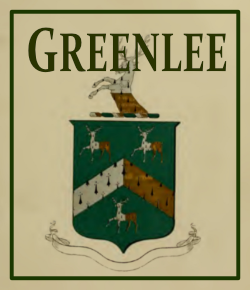 |
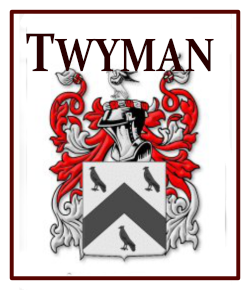 |
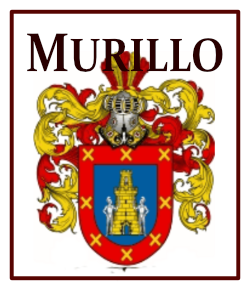 |
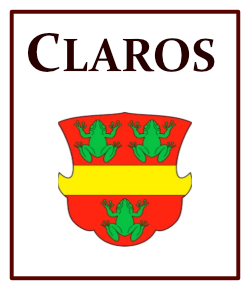 |
Categories
Genealogy
- Genealogy Portal
-
Search genealogical information related to the Greenlee, Murillo, Twyman and Claros families. Please contact us if you think we're related and can help each other in expanding our ancestry trees.

